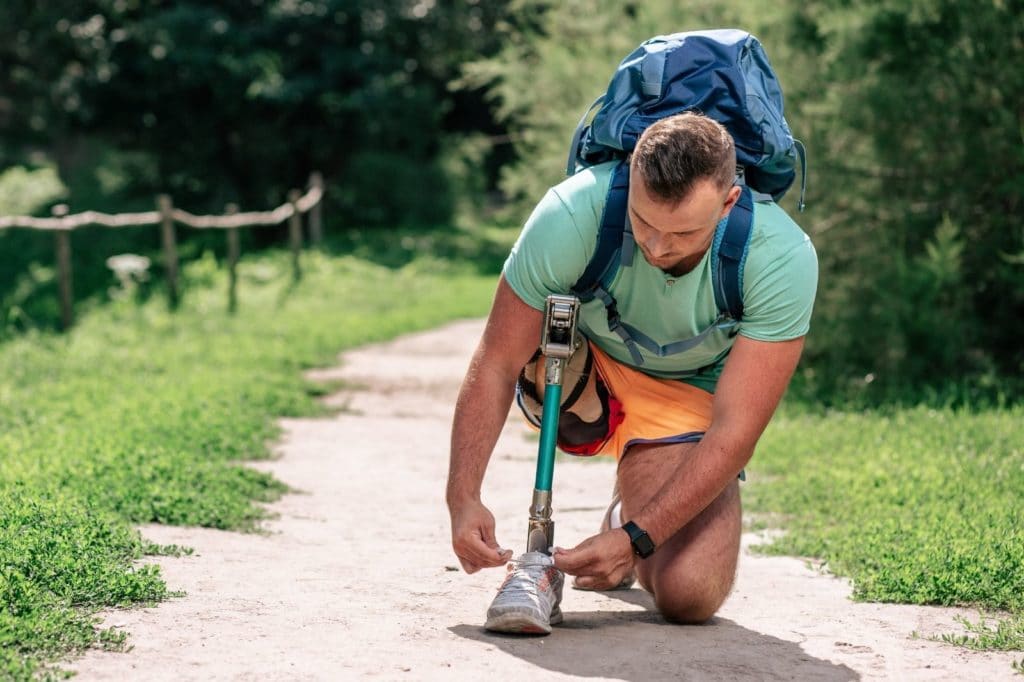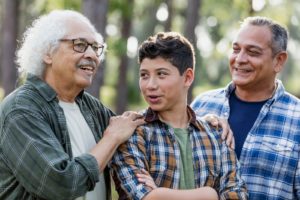Military service requires sacrifice and constant change. Unfortunately, for some service members, that change can include physical, emotional, and/or cognitive injuries. Any combination of these injuries often impacts and challenges the parent-child relationship. Both visible and invisible wounds result in questions, emotional reactions, and changes to routines and dynamics — and navigating those as a parent can be difficult.
Be Honest, Direct, and Compassionate With Your Child
Children of wounded warriors will most likely have many questions or observations that need to be answered and addressed. In times of high stress and uncertainty, however, well-meaning parents sometimes waver between false assurances (i.e., “Everything will be just like before”) and anxiously over-sharing information. A general best practice is to answer your child’s questions honestly, directly, with compassion, and in an age-appropriate manner.
Here are some examples of some questions or statements your child might have, along with possible responses:
- “What’s wrong with Mom? Why does she sleep so much more and seem sad?”
- “Some injuries and hurts are invisible. Just like when you have a headache or a stomachache, it is real and you can feel it, but other people can’t see it. Mommy has an invisible hurt in her brain that makes her sleepier now and sad.”
- “Is Daddy’s foot going to grow back? Will he still play with me?”
- “Unfortunately, daddy’s foot won’t be able to grow back. However, he is working with the doctors to learn new ways to get around, and with time we’ll know more about what options Daddy has to help his leg. Daddy will still be able to play with you, but there will just be some new ways to play sports or tag. He might be cruising around third base in a wheelchair once he’s ready.”
- “Dad never forgot things before, and he is angry now.”
- “Dad’s head was hurt when he was deployed, and even though you can’t see an injury on the outside, his brain has an injury on the inside. Remember when you hurt your leg and it was hard for you to walk the same? With a hurt brain, it can make it hard to remember things the same or even feel things the same way.”
- “Is Mom going to get all better?”
- “I don’t know right now if Mom will be just like before, but I do know that our family is strong. Mom is also working hard with her doctors to help make it better.”
Remember that you won’t have all of the answers for your child, and it’s perfectly OK to be honest with them about not having every answer. Also remember that each day is an opportunity for new understanding and processing. It does not have to all be explained and understood in a single conversation. As you learn new, important information, continue to provide age-appropriate updates to your child.
Because injuries change family dynamics in ways that can’t be covered in one conversation, intentionally maintain open lines of information that work both ways — with you providing support, education, and clarity while also allowing your child to express questions, observations, and feelings.
When it comes to visible and physical injuries, help your child ease fears by showing them how medical devices work (such as a prosthetic, walker, or eye patch), and consider asking the medical and rehabilitation providers how your child can be involved in supporting the wounded warrior parent’s care.
Provide Reassurance
Cognitive, emotional, and physical wounds impact how the service member/veteran parent thinks, feels, and behaves. In the absence of information and clear understanding, all of our brains begin to fill in missing information with possible explanations and reasoning for the changes that we observe and situations we experience. Children may personalize and internalize the changes they see in their wounded warrior parent.
In an effort to minimize this, provide reassurance to your child that they (and others) are not to blame for their parent’s injuries. Also provide reassurance that changes in mood and interactions (i.e., playing less, unable to pick up the child, attending fewer school events, or smiling less) does not signify that Dad or Mom loves them any less. Rather, these are symptoms of the injury.
Remember to emphasize the strengths that you see in your child and within the family. This can help bolster resilience and hope in times of challenge and stress.
Maintain a Connection
Mental illness, cognitive impairments, and physical limitations have trickle-down effects that can impact previous routines, traditions, and shared activities. It can be hard for the wounded warrior parent to feel connected and close to their child.
A variety of emotional and cognitive challenges (such as depression, anxiety, PTSD, or TBI) can result in persistent feelings of anger, guilt, anxiety, and/or shame. Physical injuries that limit previous independence and abilities can similarly manifest into sadness, embarrassment, and anger.
These are all emotions that lead us into protection mode — the complete opposite of the connection mode needed to engage in relationships. So is important to identify opportunities to build upon and maintain connection in the parent-child relationship, which can range from routines that take place at home to utilizing outside resources for support.
Here are some ideas for maintaining a strong connection with your child after an injury:
- Create a shared “secret handshake,” a special routine like reading bedtime stories together, or engaging in child-led play time for at least 20–30 minutes.
- Work with rehabilitation specialists to identify new ways to maintain previous activities, such as playing with your child, sports activities, and family outings.
- Identify children’s books and materials on related topics pertaining to mental health, injuries, military service, and family changes. Then use these to help guide conversation with your child.
- Sesame Street has created helpful resources that can be accessed online and are specific to military families.
- See if a Cohen Veterans Network Military Family Clinic is near you. These clinics often offer free community programming, such as monthly family movie nights, family crafts, or family game nights, tailored to provide safe and comfortable opportunities for military families to foster fun and connection.
- Check out the support programs offered to both veterans and families through Wounded Warrior Project — local opportunities may exist that provide a fun, safe, and engaging activity to be shared between you and your child.
- Consider utilizing family therapy as a way to develop a new way forward and foster healthy connection in the light of the wounded warrior’s physical, emotional, and/or cognitive challenges.
Additional Support and Resources
Parenting is a responsibility and privilege already marked with its fair share of challenges. Both visible and invisible wounds from military service are sure to add to the parenting challenges for everyone involved. For some, their struggles may be able to be treated to recovery, while other mental health, cognitive, and physical impairments are chronic in nature. Regardless of the trajectory of the wounded warrior’s challenges, my hope is that this article can serve as a springboard for continued education and resourcing to support your family connection.
In addition to resources provided by 1 In 5 Minds, organizations such as the National Alliance on Mental Illness provide a wide range of online reading material, local programming to support families, and even in-school curriculum designed for teens.
In the face of physical injury, trauma, depression, anxiety, traumatic brain injury, and other challenges that lead to “protection mode,” don’t forget the importance of “connection mode” for both you and your child. Furthering a deep family connection can be a big step toward healing the wounds and injuries sustained during service.










